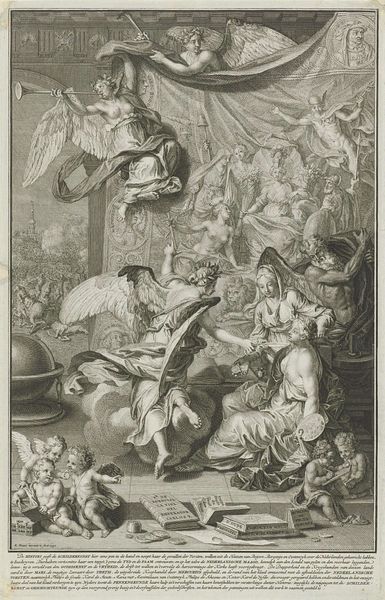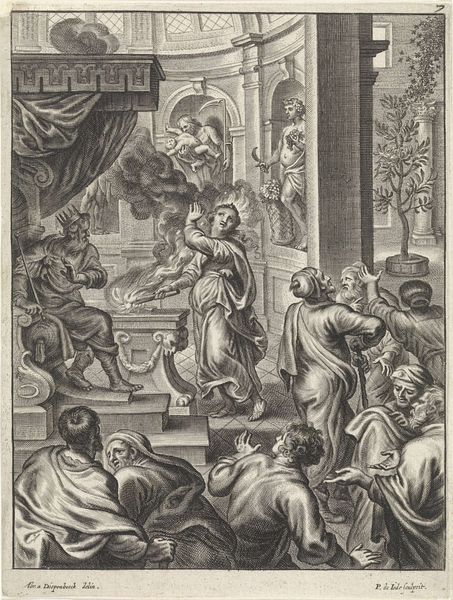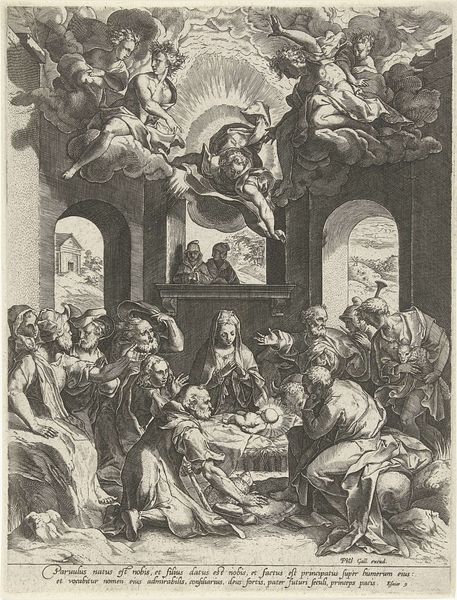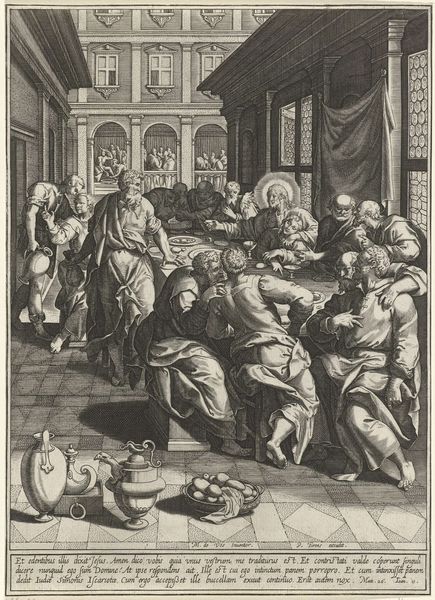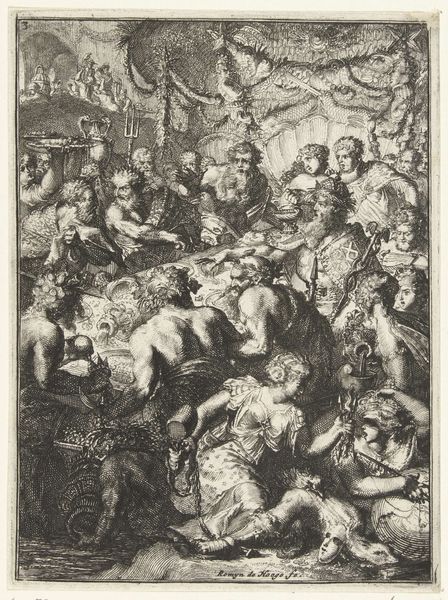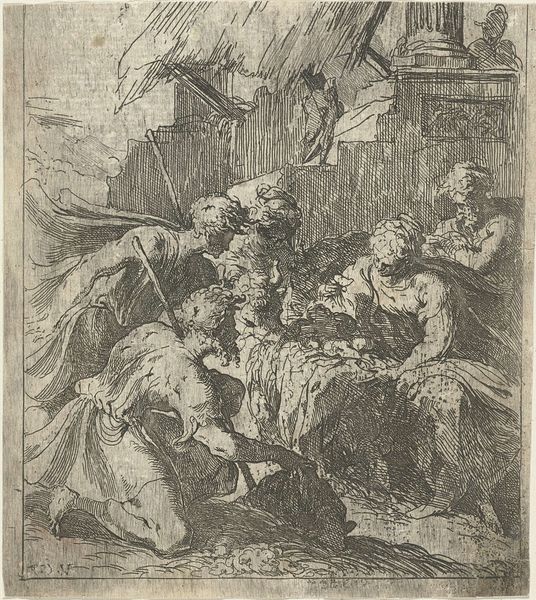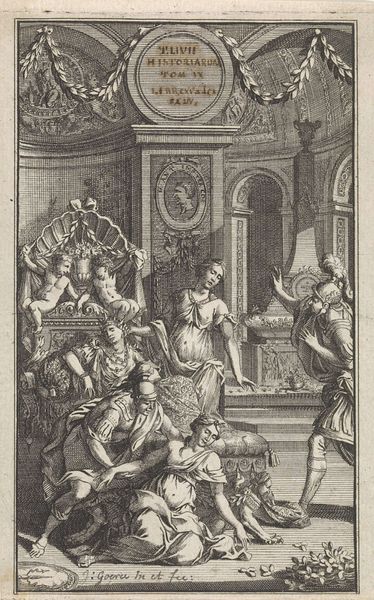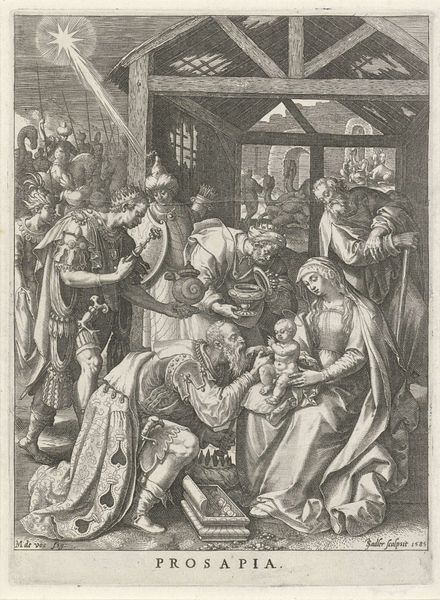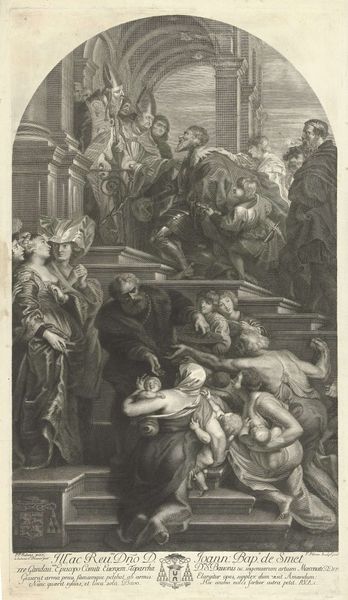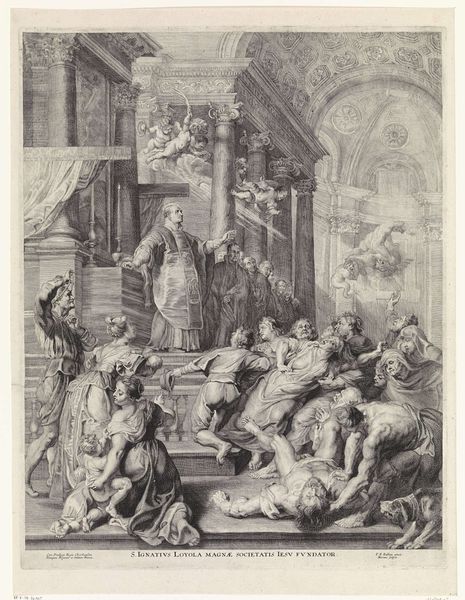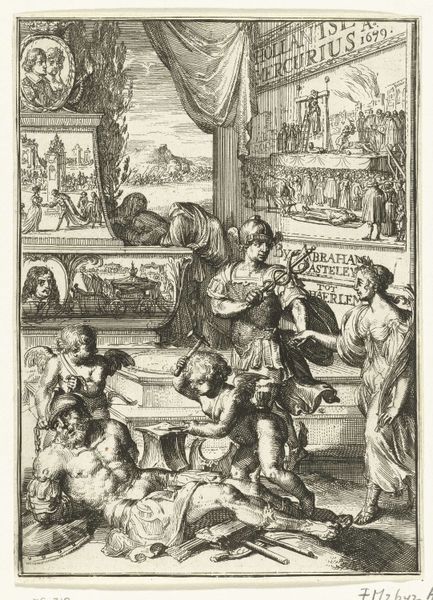
print, engraving
#
narrative-art
#
baroque
# print
#
figuration
#
history-painting
#
engraving
Dimensions: height 621 mm, width 447 mm
Copyright: Rijks Museum: Open Domain
Paulus Pontius made this print, Kindermoord te Betlehem, sometime in the mid-17th century, using engraving techniques. As a printmaker, Pontius was a skilled technician, translating Peter Paul Rubens's dramatic painting into a black and white image that could be widely distributed. Look closely, and you'll see how the density of lines creates areas of shadow and light, heightening the emotional impact of the scene. Engraving demanded precise control, but also a capacity for mass production. Prints like these served as vital means of communication in a pre-photographic era, disseminating both artistic styles and political messages. The choice of such a violent subject matter, rendered with such graphic detail, speaks to the turbulent times in which Pontius lived. Religious conflicts and social upheaval were widespread. Prints such as these not only depicted violence but also served as a form of visual propaganda, reflecting and reinforcing the ideologies of the time. Ultimately, this print challenges us to consider the relationship between art, craft, and social context. It shows how a "reproductive" medium like engraving could be used to shape public opinion and perpetuate power structures.
Comments
No comments
Be the first to comment and join the conversation on the ultimate creative platform.
